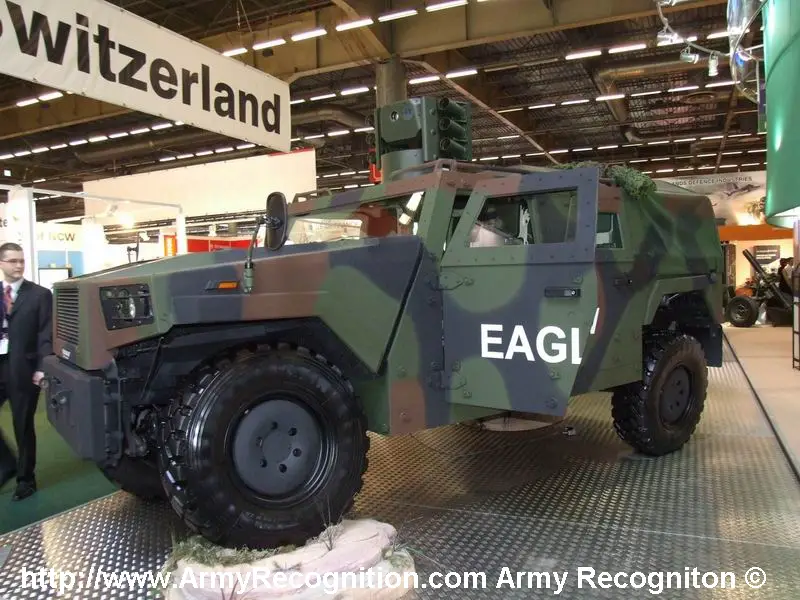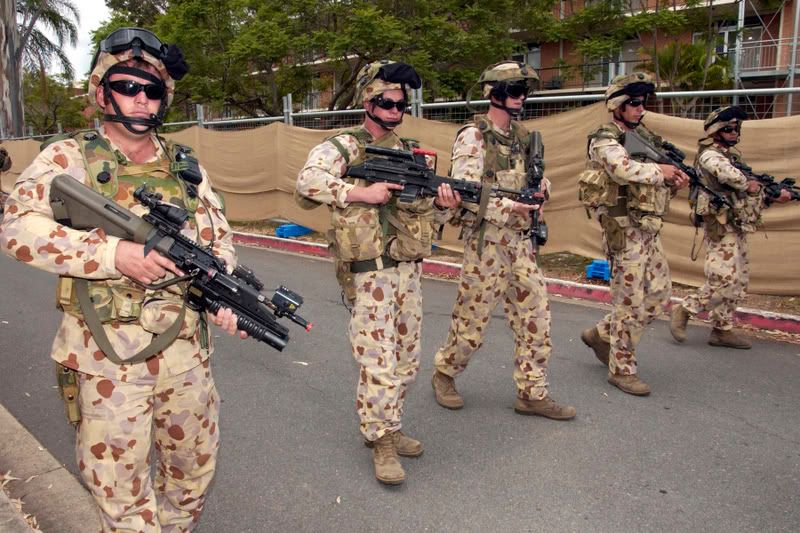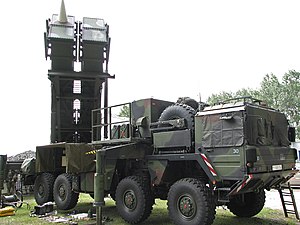Weapons Against Robots

Cada día que pasa es mayor el número de robots que “militan” en las fuerzas armadas de los países más poderosos del planeta. Este hecho no pasa desapercibido a muchos expertos, quienes temen que la situación en algún momento se desborde y nos condene a un futuro terrible. Pero siempre hay alguien que ve una oportunidad de hacer un buen negocio, y parece que esta situación no es la excepción.
Como dice Richard Tyler en su columna del Telegraph, no pocos fanáticos de Terminator deben haber asociado la red de supercomputadoras encargadas de lidiar con el enorme volumen de datos generados por el Acelerador de Aartículas.
Es que el Acelerador de partículas ha dado para todo. Nosotros mismos nos hemos pasado un par de meses entre contentos y acojonados, siempre con la mente puesta en el resultado de los choques de extrañas y masivas partículas impulsadas por Dios sabe qué tipo de energías, a través de un túnel frío e interminable. Pero hasta el momento no hemos pensado en un hecho en extremo trascendental: para procesar la información que escupe esa máquina, hace falta una gigantesca grid de superordenadores, capaz de dejar a DeepBlue a la altura de un Commodore 64 averiado.
Pero todo llega. Algunos, como decíamos, han comenzado a pensar que el peligro real está en el ordenador "de a bordo" y no en el acelerador en sí mismo. Y no se han quedado sentados a esperar que T-800 les golpee la puerta, sino que han organizado la resistencia. Ben Way, quien puede ser descrito como un visionario (o un oportunista, según el cristal con el que se lo mire) ha tomado el toro por las astas y, en menos de lo que canta un gallo, se ha montado una ¿empresa? destinada a desarrollar una serie de armas que dejarían a las de los Hombres de Negro absolutamente en ridículo. Ben pretende poner a punto algunas cositas destinadas a patearles el trasero metálico a los robots que podría construir algún día un superordenador encabronado. Si eso no es ser previsor, que me lleven preso.
En realidad, lo que Weapons Against Robots Defence Company intenta haceres ganar un poco de dinero, gracias a nuestro natural rechazo a los robots-malos-que-quieren-hacernos-pedacitos. Su objetivo declarado es "protegernos de las amenazas de un futuro robótico". Según puede verse en su pagina Web, WAR Defence desarrolla productos de tres clases, todos dedicados a salvarnos de los robots. Han puesto a su gente a trabajar en armas capaces de destruir robots; en sistemas para la detección y monitoreo de las amenazas robóticas; y en una serie de virus increíblemente malvados destinados a tomar el control de los robots asesinos y convertirlos en inofensivos adictos al jugo de naranja.
Ben sostiene que “es fundamental que comencemos a discutir ya mismo sobre las consecuencias a largo plazo y las implicaciones éticas que la revolución robótica planteará”. Es que la moda de los robots militares no se detiene. Y, aunque por ahora la decisión de disparar a un humano todavía depende de otro humano, tarde o temprano, cree Ben, esas decisiones se tomarán mediante complejas reglas lógicas y matemáticas programadas en el cerebro de un robot.

Ben, que no tiene un pelo de tonto, asegura que “las consecuencias de un potencial malfuncionamiento de uno de estos cerebros electrónicos podrían ser devastadoras”. Con esta preocupación en mente, ha puesto a sus ingenieros a pensar en formas de recuperar el control en caso de que los robots bélicos del futuro nos metan “en problemas”. Y más tarde especula sobre la evolución de la robótica: “dentro de 15 años, [los robots] serán elementos comunes dentro de nuestra sociedad. Y 15 años más tarde, poseerán un intelecto comparable al de un humano.” En este punto, es lícito preguntarse si Way hace bien en preocuparse por el tema, o simplemente es otro tío buscando la forma de hacerse rico. El profesor de Inteligencia Artificial de la Universidad de Sheffield, Noel Sharkey, asegura que la de Ben es “la primer respuesta real que he visto al uso de robots autónomos como maquinas de guerra”. Bueno, real o no, al menos es un pionero en la materia.
En realidad, uno tiende a preocuparse cuando lee sobre como el ejercito planea constantemente aumentar el numero de robots que emplea en sus filas. O sobre como una rebelión robótica podría complicarnos la vida. Pero es muy probable que Ben se haya adelantado un poco. Tampoco parece muy serio crear una empresa con un nombre bonito para “vender” sistemas de armas y dispositivos de defensa que no existen contra una amenaza que quizás nunca se concrete. Quizás, como siempre, sea más fácil y lógico prevenir que curar, evitando construir maquinas que puedan acabar con nosotros.
Si Asimov, en el siglo pasado, pudo pensar tres leyes para impedir que los robots nos dañen, los ingenieros actuales deberían ponerse a buscar una forma práctica de mantenernos a salvo.
.- Saludos.















%20(OversizeJPGLarge)_latestReleased_bae_cimg_dsei_rg31_OversizeJPGLarge.jpg)




